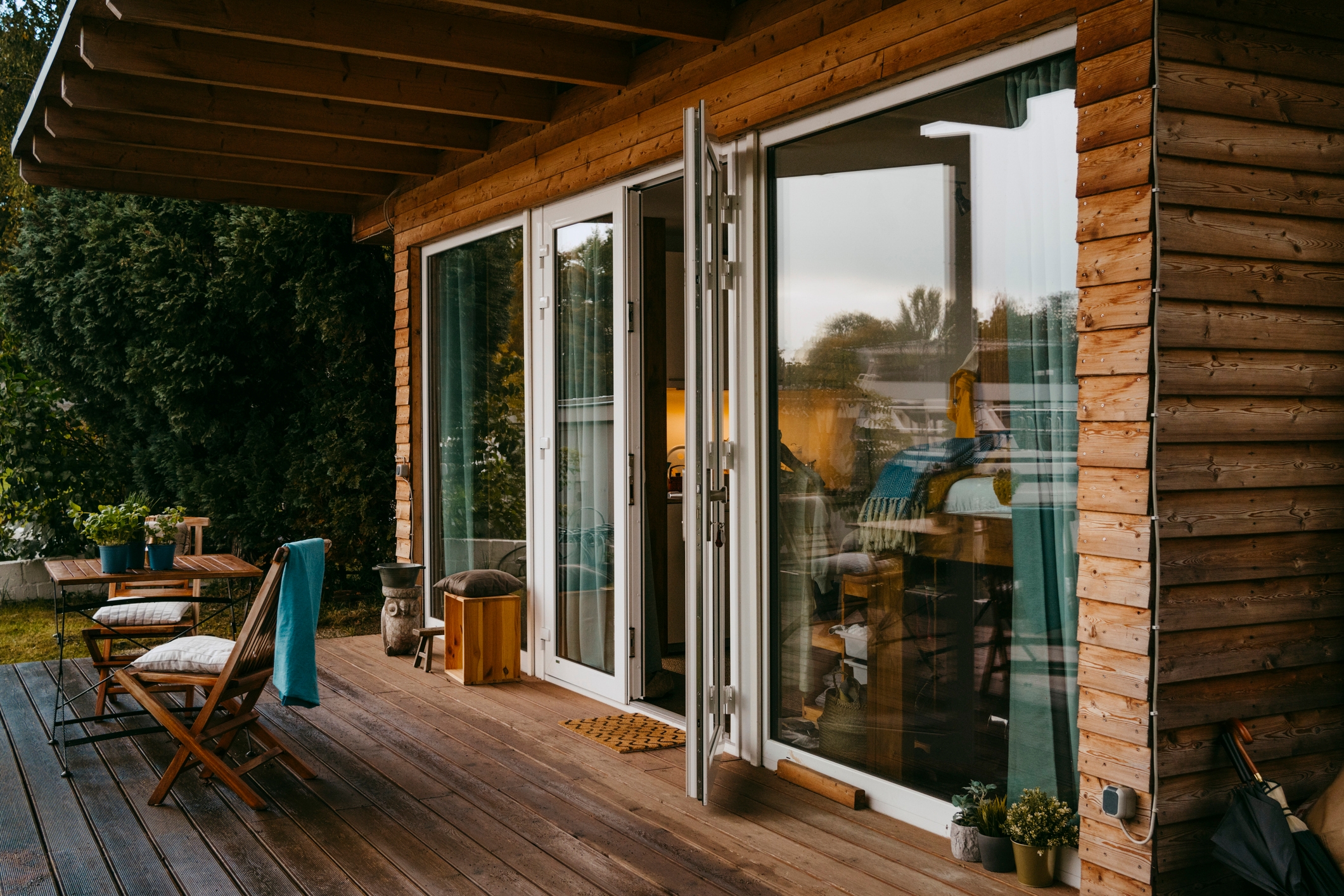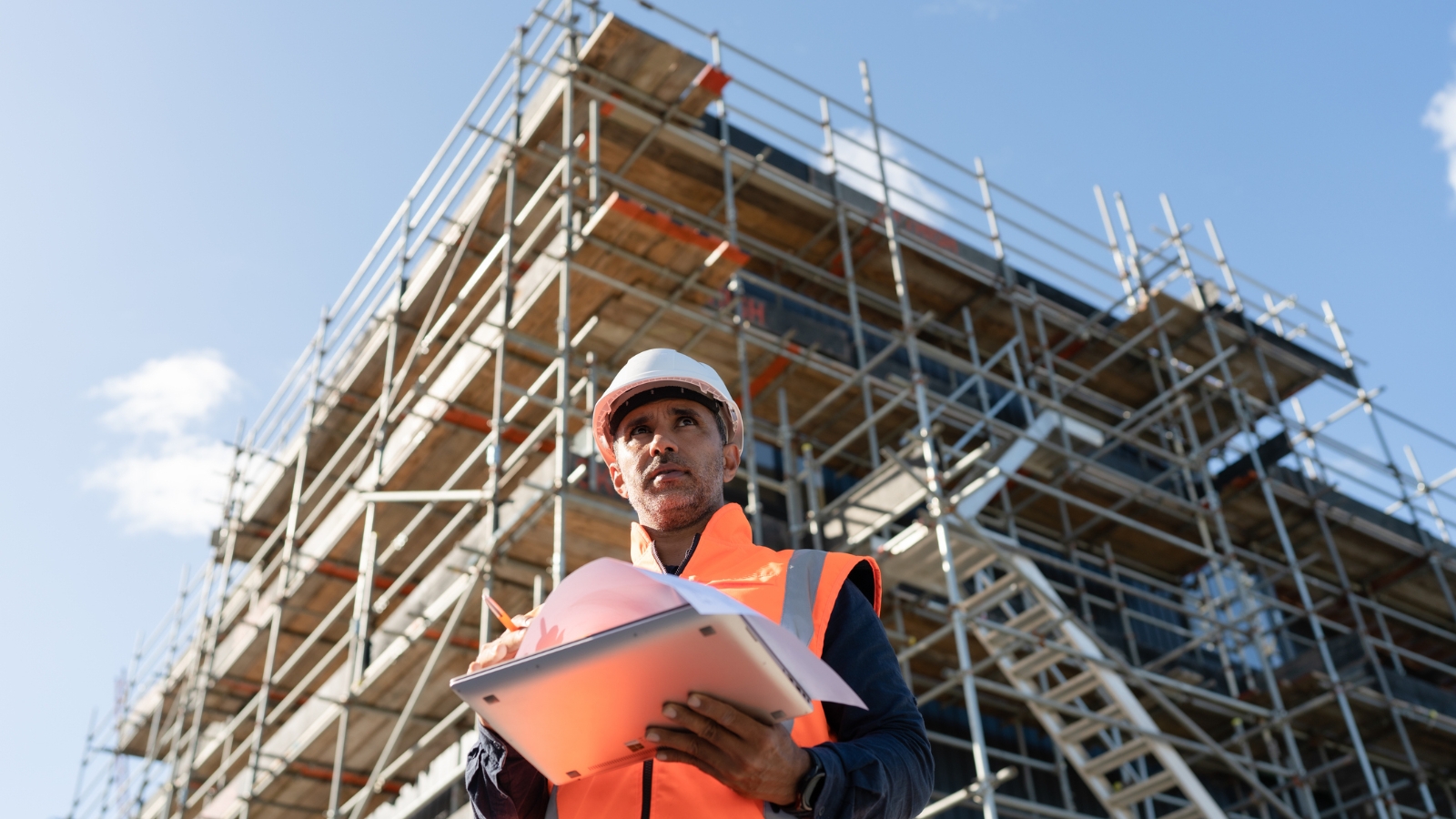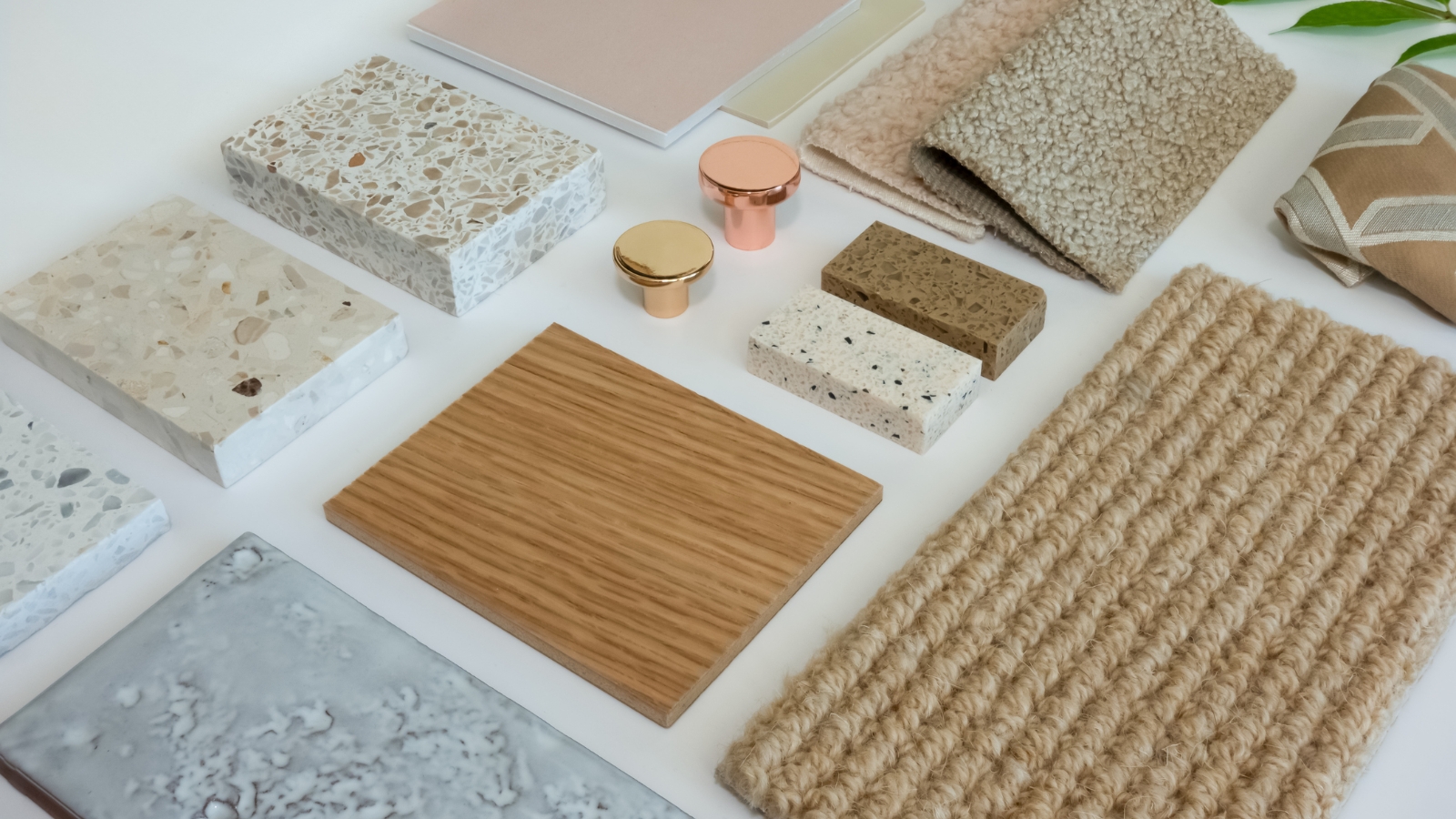Buying guide
Tips for buying a tiny home and how they’re evolving
We talk to those living the dream and find out the latest tiny home design trends.

What you'll learn:
- Smart design is the most important thing with a tiny home.
- Tiny homes cost from $30,000 to $200,000 plus.
- Tiny homes are most popular with the 45+ age group
- Tiny homes are costing an extra $30,000 to $40,000 as building supply prices rise.
- A strong trend in two storey tiny homes are walkways on the second level.
- Single level tiny homes with high pitch roofs are another key trend.
- Tiny homes are being added to existing family properties for multi-generational living.
- If you need finance to buy a tiny home, you’ll do it as a vehicle or a personal loan.
For a number of Kiwi seeking an affordable housing solution, a tiny home can mean the difference between owning a home and not. Tiny homes conjure up those idyllic childhood memories of holidays in the caravan, but they’re much nicer and better designed. And these small homes, priced from $30,000 to $220,000 plus, are popping up on urban and rural pieces of land around the country in ever greater numbers.
There’s a lot of research you’ll need to do before you take the step toward tiny home living. You’ll want to figure out:
- What you want to do there
- If it will be a permanent home
- Where will you keep it e.g. if it will be on a piece of land you lease or buy
- If you want it on wheels or for it to be fixed to a site?
The Tiny House Expo, to be held in Hamilton this October, is a good place to answer some of these questions. Expo organiser and tiny home advocate, Sharla May also runs The Tiny House Hub platform and Landshare.nz, which helps tiny home owners lease land to put their homes on, says builders have told her tiny homes are costing an extra $30,000 to $40,000 because of the rising cost of construction supplies.
The Expo organiser is working with some partners to launch a DIY flatpack tiny home next year with each panel numbered and pre-cut. Sharla, who has built her own tiny home before, is partnering with WomenzShed, which will offer a course for people to do before they start their self-build project. She estimates the flatpack homes will cost $60,000 to $70,000.
The tiny home advocate, who’s also the NZ Tiny House Awards organiser, sponsored by Resene, says the design and quality of these homes is rising in quality every year. Women designers are very involved in the design of these homes, she says, a number of them winning awards for their designs.
“The thought and functionality of the homes they design is more precise, like where every light switch is, for instance,” says Sharla.
Latest design trends in tiny homes
If you’ve seen photos of tiny homes, you’ll be amazed at what people fit in them, and the smart design that’s elevated these spaces into desirable homes. Their size is also evolving – they tend to range from 3 metres wide by 8 or 9 metres long to 4 metres wide and 12 metres long.
Customisation has reached new heights, says Sharla. She’s noticing a trend where the laundry, bathroom, and wardrobe are all in the same room, which makes sense when you think about it.
And she’s seeing smart expandable slat beds, lift up beds, flip tables, couches with storage and so on. A tiny house even has a junk drawer, it’s just about thinking about it in the design, says Sharla. Dish drawer dishwashers are very popular, and the tiny home expert is also seeing plug-in induction hobs so you can have the bench clear at other times
As for the design of the homes themselves, Aotearoa is leading the world in some of its ideas. Tiny homes company, Shaye’s Tiny Homes, has requests for its designs from international builders every week, says the company’s international correspondent, Sheila Boddington.
“The latest trend in tiny homes is the inclusion of walkways in the second story, “ says Sheila. “We first brought these out in the Hazel design in 2019 and now most builders are replicating them,” she says. The company’s popular Sophie design, with almost 12 million views on TikTok, also includes the walkway, she notes.
In its double-storey homes, people can stand upright on two sides of the bed with full-height wardrobes along the width of the house, says Sheila. “There’s no more crouching down in lofts to get dressed (unless you’re over 6’ 1). "This has been a breakthrough in tiny house living,” says Sheila.
Not everyone wants a two storey tiny home. A number of tiny home buyers, particularly those in the 45+ age range, are wanting tiny homes to be on one level, adds Sharla. These single level homes come with pitched roofs – the Lara home at Shaye’s Homes, for instance, was designed for people who don’t want to go up and down stairs all the time.
Another trend Sharla is seeing is for people to be adding a pod next to the tiny house for guests to stay or to be used as a home office.
While you don't need to be a minimalist, removing clutter will make a world of difference to your space.
Tiny home living leading to inter-generational living
The flourishing of tiny homes for sale is leading to more generational living, says the tiny homes advocate. “Where the family owns some land, the parents might be moving out of the main house, or the kids are moving back and want their own space. With land to spare, the family will build a tiny house to bring the family in,” says Sharla. “There could be three or four generations living on the land.”
These cases are probably rural land but growing numbers of property owners in the city as well as the country are offering land to tiny home owners. “At Landshare we saw a big increase, as soon as interest rates were going up, of people listing land to lease. It’s a good way to have passive income, says Sharla, who says landowners are typically charging between $100 to $300 a week depending on the services they’re providing.
Choosing your tiny home builder
The tiny home building industry has had its casualties in the last year as the rest of the building industry has, and the tiny homes advocate advises that you do your research on the builder of your tiny home as you would with any new build. The Tiny House Hub has a section on finding a tiny house builder and Sharla and her team screen all the builders who apply to exhibit at the Tiny Homes Expo. She also suggests looking at a tiny home a year after it's been built to see how it’s aged.
“Ask them about their dispute process, the builders’ warranty, fixed price contracts, and what happens if you sign now and the build’s not happening for 10 or 11 months and the price increases during that time,” suggests Sharla.
One happy customer in Wellington
Tiny homeowner, Kelly O’Dea, enlisted the help of Wellington architects, First Light Studio to get her place just right. It was the first tiny home the Wellington architectural practice worked on. Tiny home specialist builder, Build Tiny designed and built the home, which she says she wanted to resemble a tramping hut.
“It’s really important to design the space to what you want,” says Kelly.
The kindergarten teacher loves to cook so she wanted her kitchen to be a major part of her tiny home and enlisted First Light Studio’s help on this. She found most standard tiny homes had a pretty poky kitchen and she wanted a proper oven, a good length of bench space, and a big sink.
Kelly’s tip is don’t try and pack everything that was in your larger home into a tiny one.
The Wellingtonian did a lot of research before she made the move to her tiny home on a paddock in Wellington’s Ohariu Valley which she leases from friends.
The former owner of a three-bedroom home, who didn’t consider herself a minimalist, followed blogs and podcasts on the topic, and reduced the number of things she had in the run-up to making the final decision.
After the move, she had a storage unit for a while but has gradually been giving things away so there’s little need for one now.
Kelly’s home is 7.2 m x 2.4m which is pretty standard for a tiny home. Everything has a place in the sleek refuge. She wanted stairs because you gain so much storage with them – each step is a cupboard – and she has a skylight and small windows upstairs where she sleeps.
“I have big double doors and open them so it feels like I’m outside,” she says. And she has a pallet that becomes her deck if she needs one. Her closest neighbours are a flock of sheep.
The home is double glazed and well insulated, it’s connected to a water tank, and there’s solar for electricity and gas bottles for heating.
“It’s made life simpler – it’s a nice clean space,” says Kelly, who’s delighted with her home. She couldn’t afford something this nice if it were larger, she tells people.
Kelly notes she has her mother and two sisters living in Wellington.
“So my tiny house doesn’t have to be everything. It’s a space where I spend time by myself,” she says.
Her mother’s house is perfect for entertaining, so that’s where she does that. She doesn’t have a washing machine, which is fine because she stays at her mother’s place once a week and does her washing there.
“My tiny home just has to do 90%,” says Kelly.
Tiny home design doesn't have to be boring!
How the finances work for a tiny home
Tiny homes aren’t normally classed as a building but as a motor home because they’ll usually come on wheels so to get finance for a tiny home, it’s either through vehicle lending or as a personal loan, says Sharla. The tiny home advocate is working with an insurer at the moment on a tiny house policy because at the moment people insure their home as a caravan.
Living in a tiny house gives you many more life options, says Kelly, who enjoys having no mortgage and the minimal upkeep on the tiny house.
“There’s spare money to do the things you want to do. If I wanted a year off I could save for that quite quickly,” she says.
High-ceilings will make your tiny home look and feel bigger.
Bringing in the great outdoors
People have higher expectations around what they want to include in a tiny house, says Gina Stevens, director and designer at tiny home specialist, Build Tiny.
Gina is exploring another trend in tiny homes which is to connect more with the outdoors. Her home on 1000 sq m of land in rural Bay of Plenty, and has been extended with a cabin that she’s had built by her company next to the tiny house, the two connected by a deck patio. Gina is using the 10 sq m cabin as a home office and a place for nieces and nephews and her partner’s children when they come to stay.
You'll avoid the need for building consents if you buy a home on wheels!
Why do tiny homes have wheels?
Should your tiny home have wheels or be fixed? Wheels are a good idea, says Gina. Anything with a kitchen and bathroom, if it doesn’t have wheels, is seen as a building under the Building Act so it would need building consent, she explains.
“Everything we build is a vehicle though we’re building our tiny homes to building code,'' she says. People are looking for flexibility and manoeuvrability which is what a tiny house on wheels is.
Tiny homes experts will talk a lot about the weight of the home being important. To be road legal there are strict rules around the weight of the materials of the house. To tow it on the road legally on its own wheels there’s a 3.5 tonne limit, explains the Build Tiny director.
Gina’s tiny house is clad with vinyl weatherboards, while the interior walls are lightweight poplar plywood.
“It means my tiny house is roadworthy at any point in time. I could hook up the vehicle today, it’s very movable and portable,” says Gina.
Of course, the lightweight feature can be a problem in windy climes – most people will tie their homes down in Wellington.
Try before you buy
Try out living in a tiny home before you make the move, advise tiny home experts. Build Tiny allows you to book a weekend away in a tiny home built by the company in Napier or the Kapiti Coast or Hilltop in Papakura. People often Airbnb their tiny homes so there will be opportunities to rent tiny homes on the website too. There are so many more Airbnb tiny homes now, says Sharla. She suggests trying out a few and taking notes about what you like and don’t like before building or buying your own.
Having a tiny home is about taking back control of your life, adds the tiny home advocate, who used to own a house with a garden. “People get confused about where they will put all their possessions and the lack of space. They’re missing the point, this is about freedom and choices,” she says. When she had a “big house” she was always working on the property doing gardens and lawns and didn’t have any money left to have fun. The beauty of tiny homes is they’re lock ‘n leave, she says.
Author
Other articles you might like










